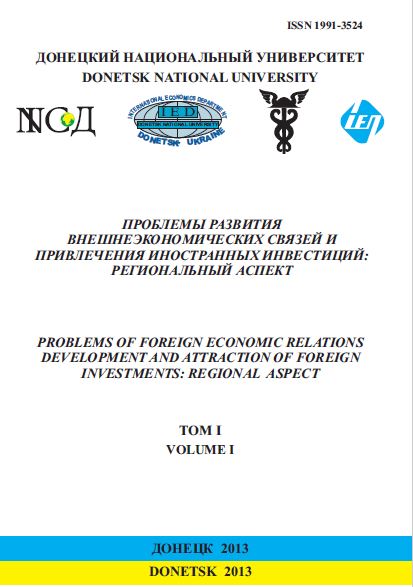Operating environment – a guideline for using flexible employment in enterprises
Ключові слова:
human resources, flexible employment, flexible forms of employmentАнотація
The article presents summaries of the results of an empirical study of firms producing food products in Bulgaria. Managers' opinions about the parameters of the environment in which businesses operate use the necessary human resources have been systemized. The way they evaluate the environment and its impact on the use of flexible employment for increasing companies’ competitiveness has been presented. Main problems have been stated and relevant summaries made.Посилання
Проект № 9-2012 „Гъвкавата заетост в българските бизнес организации”, осъществен от екип: доц. д-р П. Кънев, гл. ас. д-р И. Пантелеева и гл.ас. д-р З. Иванова и гл. ас. К. Кулчев. Проектът е финансиран от ИНИ към СА „Д. А. Ценов” – Свищов (Project No. 9-2012, Flexible Employment in Bulgarian Business Enterprises, implemented by Assoc. Prof. P. Kanev, PhD, Head Assistant I. Panteleeva, PhD, Head Assistant Z. Ivanova, PhD, and Head Assistant K. Koulchev. The project was financed by the Scientific Research Institute at Tsenov Academy of Economics, Svishtov.).
Адамчук, В.В., Ромашов, О.В., Сорокина, М.Е. Экономика и социология труда. М.: ЮНИТИ, 2000, с. 124.
Квеско, Р. Б. Занятость населения и ее регулирование. Учебное пособие, Томск: Издательство Томского политехнического университета, 2008, с. 61.
Кънев, П., Христова, В., Пантелеева, И., Иванова, З. Гъвкава заетост в индустриалните бизнес организации. Сборник с доклади от Международна юбилейна научна конференция „Икономиката и управлението в XXI век – решения за стабилност и растеж”, 8 – 9 ноември 2011 г., Свищов, СА „Д. А. Ценов” – Свищов, Свищов, 2011, с. 179-186.
Atkinson, J. Manpower strategies for flexible organisations. – Personnel Management, August, 1984, pp. 28-31.
Cappelli, P. Neumark, D. External Churning and Internal Flexibility: Evidence on the Functional Flexibility and the Core-Periphery Hypothesis. – Industrial Relations, vol. 43, No 1, January, 2004, pp. 148-182.
Colclough, G., Tolbert, C. Work in the fast lane: Flexibility, divisions of labor, and inequality in high-tech industries. NY: State University of New York Press, 1992.
Flexible Work Arrangements: A Definition And Examples. Workplace flexibility 2010. An Alfred P. Sloan Foundation Initiative. Washington: Georgetown University Law Center, 2010, р. 2.
Hunter, L, McGregor, A., MacInnes, J., Sproull, A. The „flexible firm“: strategy and segmentation. – British Journal of Industrial Relation, 1993, vol. 31, pp. 383-407.
Kalleberg, A. Organizing Flexibility: The Flexible Firm in a New Century. – British Journal of Industrial Relations, Blackwell Publishers Ltd/London School of Economics, December 2001, Vol. 39, Iss. 4, pр. 479-80.
Smith, V. New forms of work organization’. – Annual review of Sociology, 1997, vol. 23, pp. 315-39.
Tsui, A., Pearce, J. L., Porter, L., Hite, J. P. Choice of employee-organization relationship: influence of external and internal organizational factors. – Research in Personnel and Human Resources Management, 1995, vol. 13, pp. 117-51.

